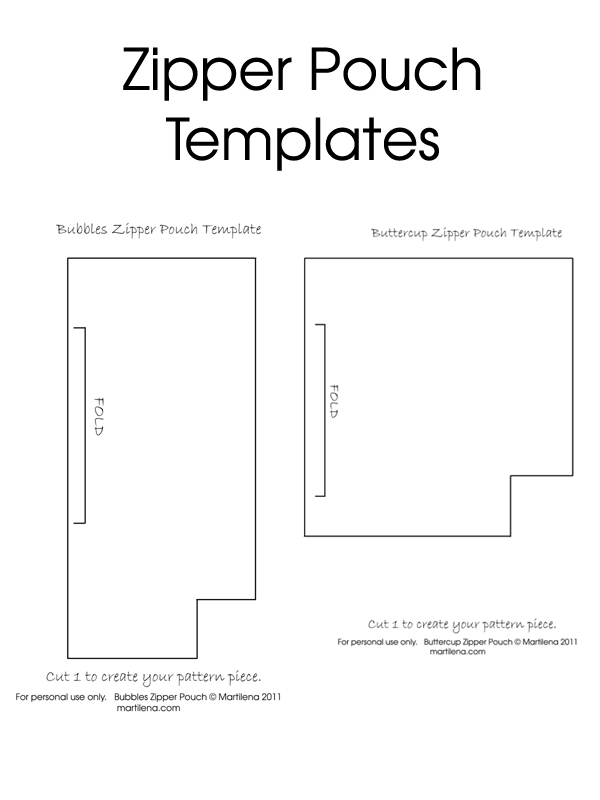The gusseted zipper pouches are basically a slight variation of the Zipper Pouch with Snap Hook Tutorial. The gusset will provide added depth to the pouch, so you’ll have more room for stuff. The first step is to create your pattern pieces and I’ve provided two sample pouch patterns to download to help get you started.
So to begin you need to cut…
I usually use fusible interfacing because it’s easier to work with when matching up multiple layers. So if you go that route, iron your interfacing to the front and back body pieces. All seams shown are 5/8″. Now from here you can refer back to my previous zipper pouch tutorial to begin construction.
The snap hook shown in that tutorial is completely optional. Follow these instructions, until you reach the step that says to stitch it all the way around. From here things go a little bit differently…
You will stitch each side from one end to the other, except for the lining you’ll want to leave an opening for turning.
It should look like this once all the sides are sewn…see the hole for turning at the bottom of the lining.
Now to sew your gussets. Take each corner and match up the pieces, seam to seam. Pin in place, so the seams will not shift/move while sewing. The seam should be in the middle on either side. You’ll want it to look like this…
Now you stitch a 5/8″ inch seam across. You’ll want to trim down the excess to about 1/4″ after stitching is complete. If you leave all the excess, it will be difficult to fold everything out properly. You can see in this photo the seam allowance is already trimmed down along the side.
Once you’ve sewn all 4 corners as shown above & trimmed down the seam allowances, you are ready to turn the pouch. Pull everything through the opening in the lining, check to make sure everything looks good and if so, sew that opening closed. That’s it your done. A completed pouch should look similar to this…
Click on the image below to download the free pouch pattern templates. You’ll want to cut one of each out of cardstock/posterboard to create your actual pattern piece. It’s always easier to cut with your fabric lying flat versus cutting along a fold line.














0 comments:
Post a Comment